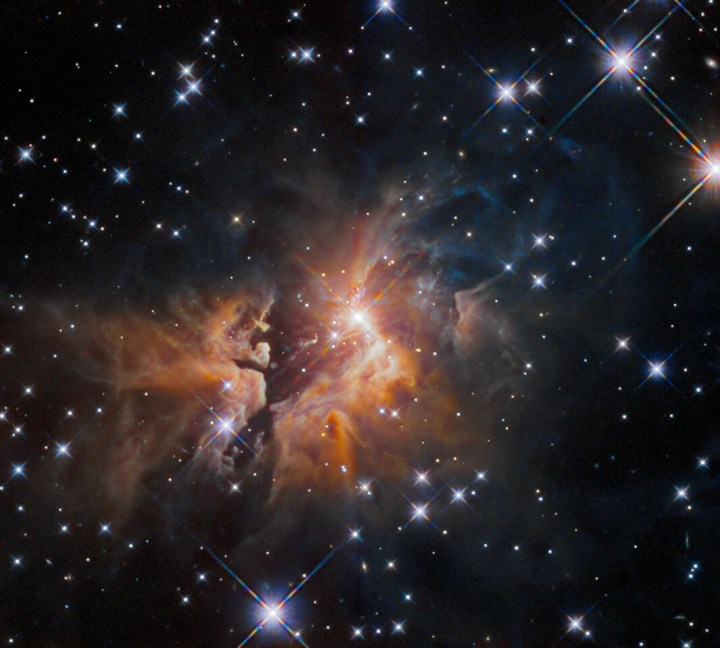The lifecycle of stars is dramatic, from the collapsing of clouds of dust and gas under gravitational pressures to form protostars, to the explosive end of massive stars which erupt as supernovae. Massive stars heavier than our sun are particularly dramatic, eventually puffing up to become red supergiants as they come to the ends of their lives before finishing up as black holes or neutron stars. But massive stars can go through epic changes when they are in their younger years as well, as this week’s image from the Hubble Space Telescope shows.
The image is of a bright, young, massive star surrounded by a stunning structure of dust and gas. The object is called IRAS 05506+2414, and is located more than 9,000 light-years away from Earth in the constellation of Taurus. And its swirling shape seems to have been created by a disruptive event in the life of this young star.

“The swirling discs of material surrounding a young star are usually funneled into twin outflows of gas and dust from the star,” Hubble scientists write. “In the case of IRAS 05506+2414, however, a fan-like spray of material traveling at velocities of up to 217 miles per second (350 km per second) is spreading outwards from the center of this image.”
According to a paper from 2008, the outflows of material in IRAS 05506+2414 could be similar to the “bullets” of gas seen shooting out of the Orion nebula. These bullets appear small from a distance, but are actually around the size of our solar system and are zipping away from the center of the nebula at a tremendous speed of 250 miles or 400 kilometers per second. First seen in 1983, the Orion bullets remain something of a mystery, though they are brightly visible in images because the iron atoms at the tips of each bullet get so hot from the friction of their movements that they glow due to their 5000°C (9,000°F) temperatures.
The case of IRAS 05506+2414 is unusual, according to another paper from 2017, because other young stars throw out twin jets of materials like those seen in Herbig-Haro objects. The fans of material given off by this star are very different and scientists are still researching how the star system could have been disrupted to cause this result.
Editors' Recommendations
- Hubble will switch to a new mode to preserve its troublesome gyros
- Celebrate Hubble’s 34th birthday with this gorgeous nebula image
- Hubble spots a bright galaxy peering out from behind a dark nebula
- Hubble captures the dramatic jets of a baby star
- Hubble images the spooky Spider Galaxy



